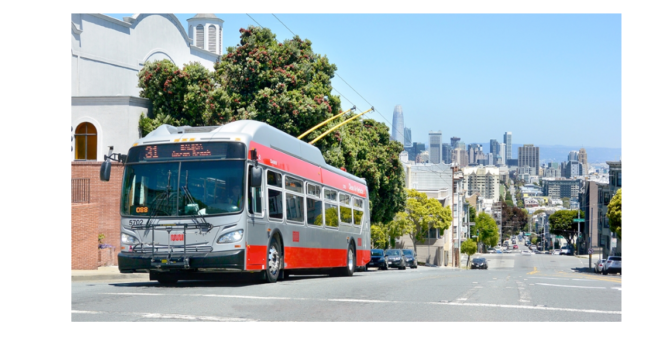
San Francisco has the largest trolleybus fleet in the USA, with a fleet of 278 modern trolleybuses delivered in the three years to 2019. It is also regarded across the world as the archetype of a city most suited to trolleybus operation. However, the advent of battery electric buses in recent years has called into question the trolleybus’s dominant role, even in San Francisco. The management of the agency, SFMTA (popularly known in short as Muni), often express satisfaction with the presence and performance of their trolleybus system. Nevertheless, earlier capital plans and other planning documents identified transitioning the fleet to full battery buses as a goal. This has led many people to fear that the management’s appreciation of trolleybuses is tepid at best and that the agency will succumb to political pressure and industry hype to adopt battery electric buses on a wholesale basis.
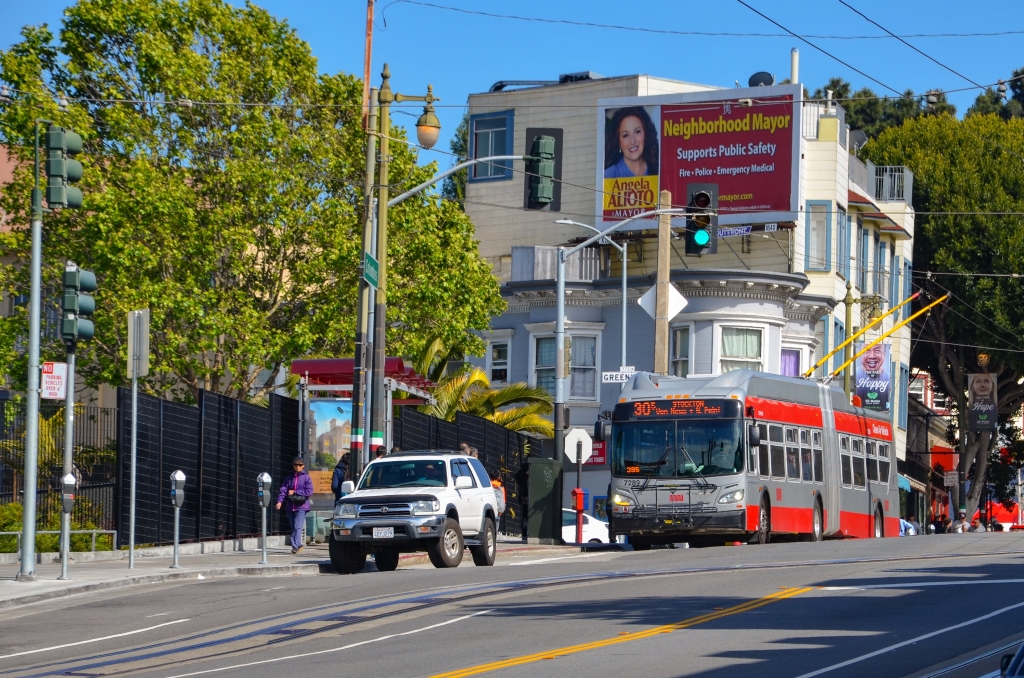
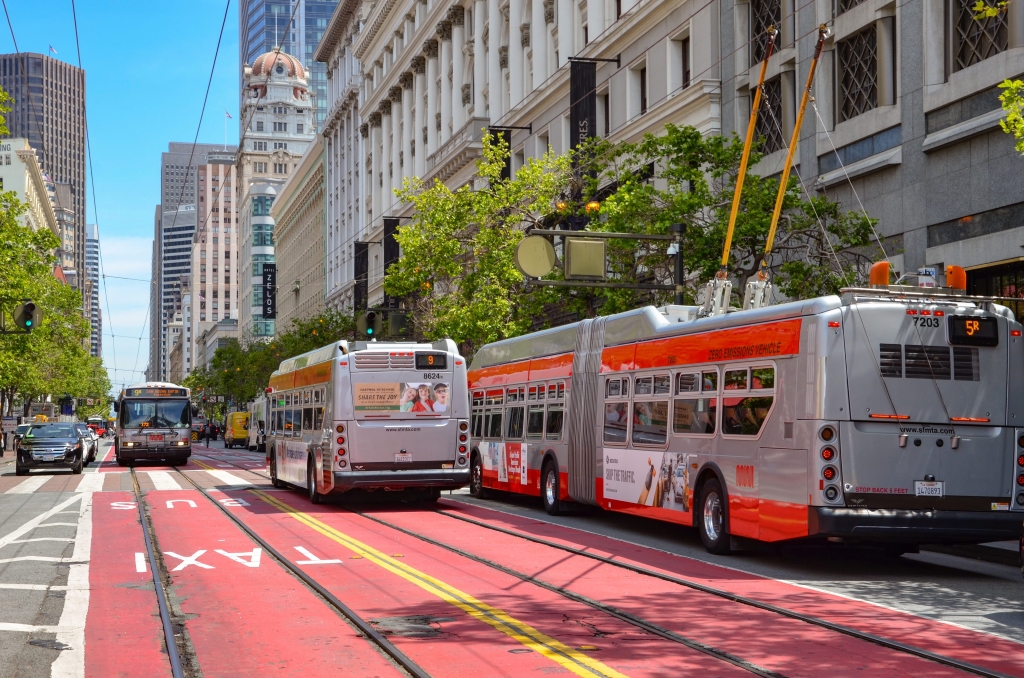
In an unusual but welcome initiative, the local trade union representing electrical workers employed by Muni commissioned an independent, university-led study comparing the relative performance, costs and environmental impacts of battery buses and trolleybuses. The study also linked with an environmental advocacy group to examine the implications in terms of resource use and global impacts of battery supply chains for the transportation sector.
The study concluded that the use of additional trolleybuses with IMC will:
- be the most effective and cost-efficient way to increase the level of bus electrification in the city;
- greatly reduce the use of scarce minerals and the harm done to populations in the global south;
In more detail, its findings and recommendations included the following:
- By leveraging the existing investment in electrical infrastructure and making use of the latest In Motion Charging technology, it will be possible to more than double trolleybus operations and extend electric bus service to a further 210 miles of route. Because of IMC technology, this doubling can be achieved with the addition of only 33% more overhead wiring.
- The use of battery electric buses rather than IMC trolleybuses would require a larger fleet, larger garages, greater installed power and consequently be more expensive.
- IMC trolleybuses have much smaller batteries than battery buses (around 10%) and use mostly abundant minerals. This means that negative effects on global and human health are significantly reduced.
- Expansion of the existing trolleybus system can be achieved more quickly than starting afresh with battery electric bus technology.
The study began with an in-depth analysis of one sample route (the 44) and having demonstrated the advantages of electrification by IMC trolleybuses on this one test route, then expanded its ambit to consider another ten candidates for electrification with IMC trolleybuses. The electrification ratio is the proportion of a route requiring new overhead line.
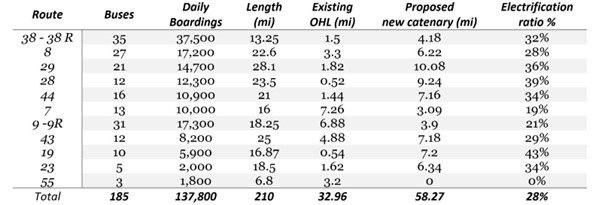
The effect of the proposed expansion can be seen in the following map. Sections of existing wiring used for additional services are shown in red, while completely new wiring is in black and sections to be served in battery mode are shown in yellow.
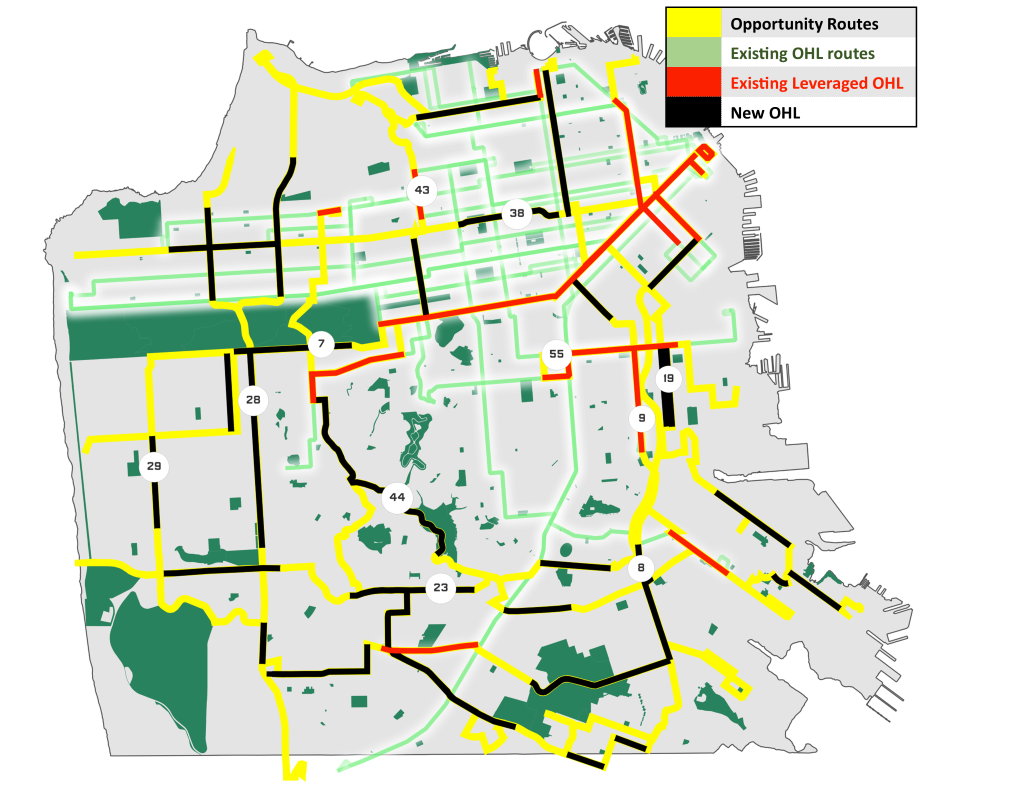
The resulting expansion of the trolleybus fleet is shown in the following table. The current baseline is relatively low because of the slow recovery of services post-pandemic. The additional 11 routes would more than double current trolleybus usage. Once a full recovery of traffic is achieved, the total will be higher, but the ratios may be different.

San Francisco’s trolleybus fleet is modern, there is good investment in electrical infrastructure and there is a skilled workforce keen to develop the system. Hopefully the agency’s management and city political leaders will see that expanding trolleybus operations – in line with the report – is the best way to achieve full electrification of the bus system.
Link to the study:
https://www.climateandcommunity.org/trolleybus-decarbonization
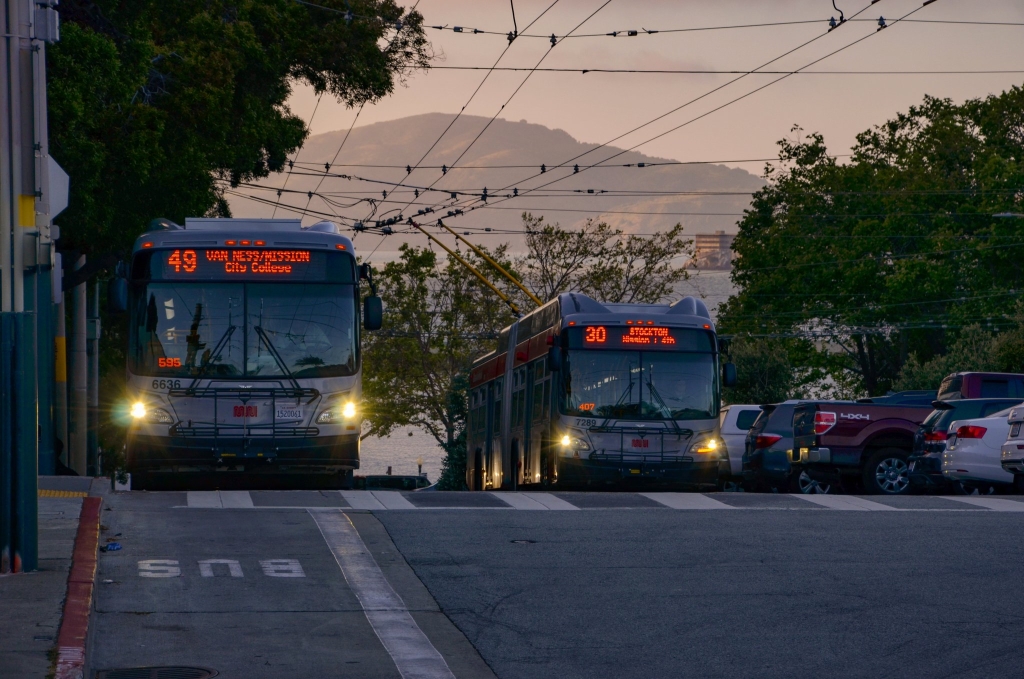


IMC is needed in Vancouver BC. Need to extend trolleys into Burnaby increasing the 320 km overhead wires to 400 km.
After Dayton, et tu SF? Sad state of affairs. For battery buses, cost of higher number of high-current charging sub-stations seems to be ignored since they are provided by the utility company. With IMC trolleybuses, low-current charging increases battery life, smaller fleet(less drivers) for same traffic, practically no charging infra and related costs in the depot. Life-cycle cots would most certainly be favourable. The zero-emission subsidies must be made available to the century-old proven and original ZEB.